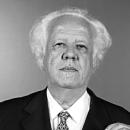
The myth of the sanctuary city
MÁS EN ESTA SECCIÓN
It is the new hobby horse of conservative legislators, anti-immigrant ‘think tanks’ and nativist organizations and individuals: Sanctuary cities. Where, according to myth and legend, undocumented immigrants run amok doing whatever they want while local authorities turn a blind eye.
Except, no such cities exist.
There is no Immigration and Customs Enforcement-free zone in the United States. There are only places — like Philadelphia — that have some locally enacted regulations restricting participation in the Secure Communities program (now superceded by the Priority Enforcement Program, which requires local law enforcement to notify ICE when it releases someone local authorities suspect is undocumented).
In 2011, when City Council voted not to approve renewal of the agreement had been enacted between Secure Communities and the city three years before, then-Councilman Jim Kenney and Councilwoman María Quiñones-Sánchez pointed to the program’s numbers: There were more ICE agents in Philadelphia than in any other U.S. city (at that time) and 82 percent of those deported via the Secure Communities had neither a record nor had been charged with any crime.
The murder, July 1 of this year, of 31-year-old Kate Steinle in San Francisco, allegedly by an undocumented immigrant, Juan Francisco López-Sánchez (who had been deported several times) has placed any city with regulations in place restricting local law enforcement collaboration with ICE in the category of “sanctuary” city — and made it a target for corrective action, much of it broadly anti-immigrant in nature.
Take, for example, North Carolina. Last week, the legislature approved HB 318 (which Governor Pat McCrory is expected to sign into law) which is so zealously opposed to any municipality becoming a “sanctuary city” that it has made employment contingent on a valid identification — and has made the consular IDs it used to accept as a legitimate identifying document invalid.
Both documented and undocumented immigrants use the consular ID card (issued by consulates of the country of which the immigrant is a citizen) for a number of everyday tasks, for example, to open bank accounts. This is a considerable benefit, given that 43 percent of Latinos (documented as well as undocumented) do not have bank accounts and are often targets of crime (they are considered “walking ATMs”) because they are more likely to have cash on hand than people with bank accounts.
Those to whom a consular ID has been issued are also more likely to come forward to report as crime they have witnessed or in which they themselves are victims. Local police and sheriff’s departments have been enthusiastic about consular IDs; 800 departments nationwide accept them as valid documentation.
In addition, according to the Migration Policy Institute, the “direct uses of the (consular ID) cards lie in the very narrow band of public and private services for which high-quality identification is required, but proof of legal residency is not. Private companies have begun to accept the matrícula for opening accounts for utilities and insurance. USAir and Aeromexico, among other airlines, allow passengers to use the matrícula to board flights originating in the U.S.. ... The local governments of 80 cities, including Tucson, Phoenix, Denver, Los Angeles, San Antonio, San Francisco, Chicago, Houston, and Dallas accept the matrícula for uses such as obtaining a library card, entering public buildings, obtaining business licenses, registering children for school, and accessing a few, limited public services.”
So it is that the specter of becoming a “sanctuary city” has driven a state to rescind a form of ID that makes life liveable for documented and undocumented alike, and which even law-enforcement agents and agencies support. Such is the power of myth, legend and media-supported fallacies about immigrants.






DEJE UN COMENTARIO:
¡Únete a la discusión! Deja un comentario.